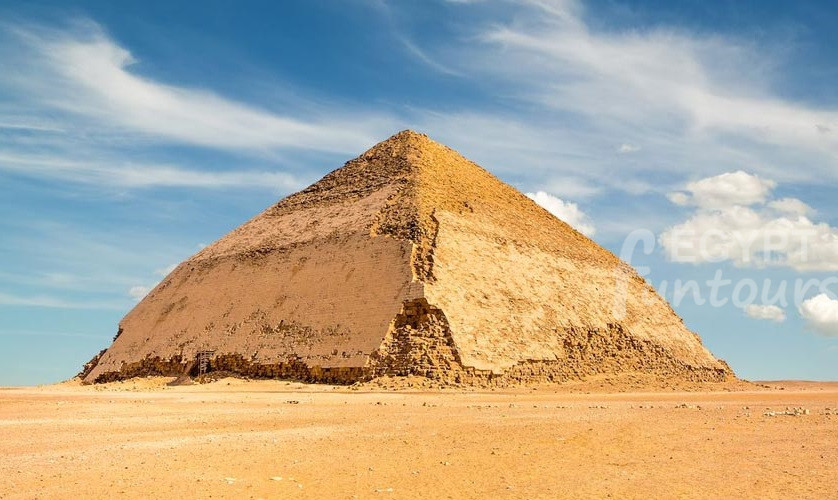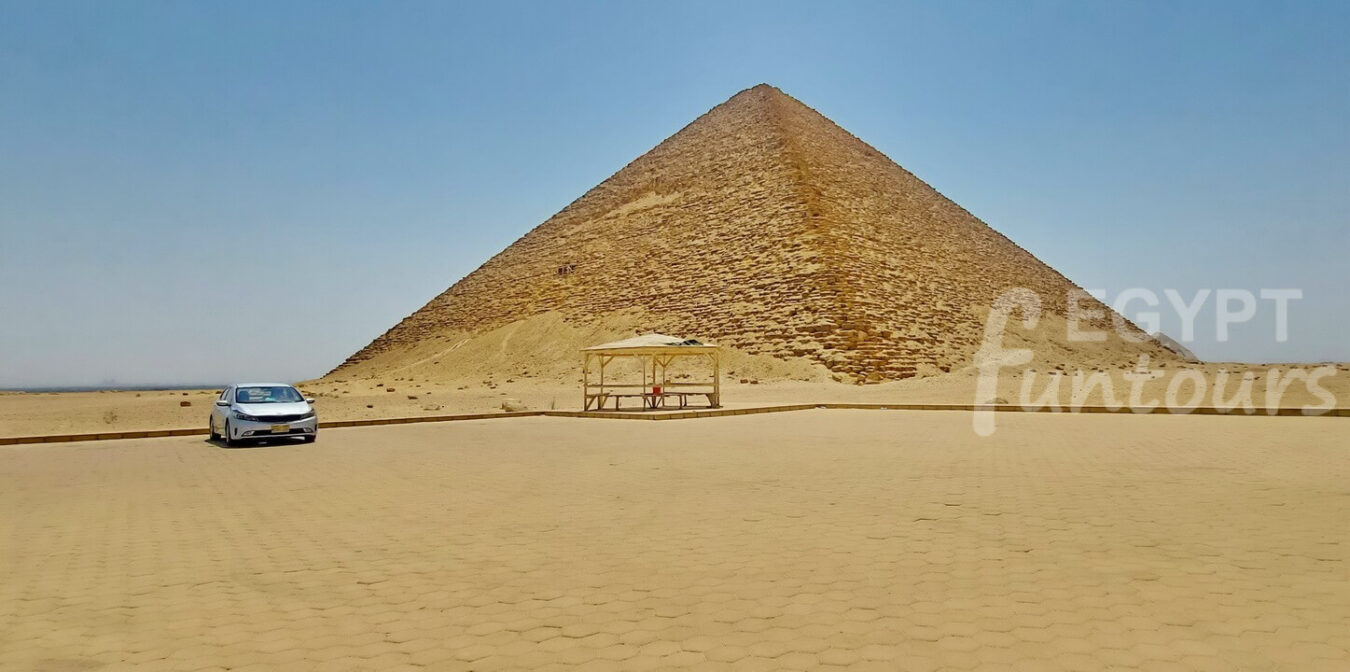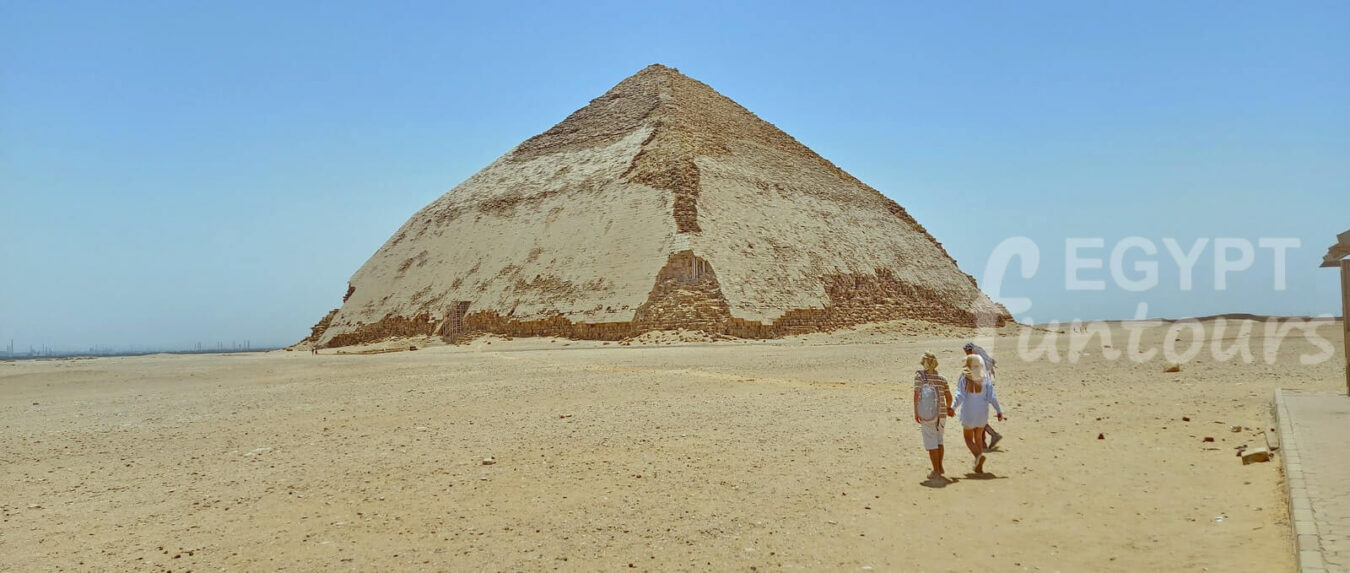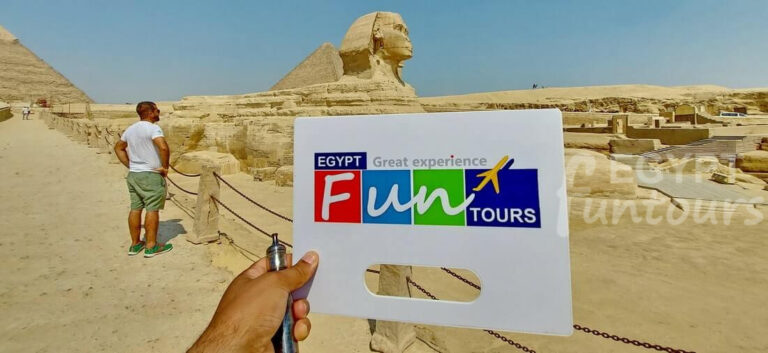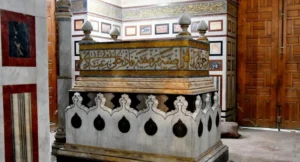Want to escape the crowds of Giza and feel like a true explorer? Welcome to Dahshur pyramids, one of the most important and least-visited “hidden gems” in all of Egypt.
Located just a short drive south of Saqqara, Dahshur is an ancient, windswept royal necropolis. This is not just another field of pyramids; this is the “research and development lab” where the pharaohs learned how to build a true, smooth-sided pyramid.
Here, you will stand in awe before two of the most important pyramids ever built—the “beautiful mistake” and the “first great success.” Best of all, you can do it in near-total peace, and even venture deep inside one… often, all by yourself.

